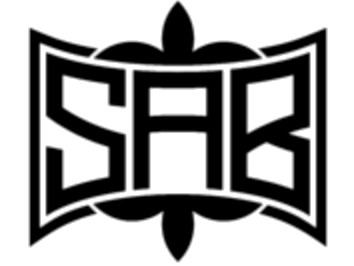
It's a Trap-pist Beer Tasting
-
1861 - Westmalle
Our journey begins with Westmalle, one of the most famous Trappist breweries, located in Belgium. The Abbey of Our Lady of the Sacred Heart, known as Westmalle Abbey, was founded in 1794. In 1836, the monks brewed their first beer, which marked the beginning of their brewing tradition. Westmalle is credited with creating the Dubbel and Tripel beer styles, which have become iconic in the world of Trappist brewing. The Westmalle Tripel, first brewed in 1934, is often regarded as the mother of all Tripels.
Dubbel: Traditional Dubbel-style ale. 7%
Tripel: Lighter and higher in alcohol content (9.5%) they began brewing this "mother of all Tripels" in 1934. Hazy straw-colored and a billowy white head. Aroma is reminiscent of ripe bananas, citrus, yeast and spiced pears. Flavor begins with notes of slightly sweet fruits and earthy spices with an underlying bitterness similar to orange peel. -
1884 - La Trappe
La Trappe, brewed at Koningshoeven Abbey in the Netherlands, is the oldest Trappist brewery outside of Belgium, founded in 1884. The abbey was established by French monks fleeing religious persecution, and they brought their brewing tradition with them. La Trappe offers a range of beers, including Blond, Dubbel, Tripel, and Quadrupel. The brewery was once sold to a commercial company but was later reclaimed by the monks, ensuring that La Trappe remains an authentic Trappist beer.
Tripel: Blends Belgian yeast aroma with a light refreshing finish. It pours a dark honey color in the glass with a slight haze from the second addition of yeast. 8%
Quadrupel: Heavy alcohol-forward body and a rich amber color. Malty, nutty, soft vanilla notes. 10% -
1899 - Rochefort
Next, we move to the Abbey of Notre-Dame de Saint-Remy in Rochefort, Belgium. The abbey was founded in 1230, but it wasn’t until the 16th century that the monks began brewing beer. However, the modern Rochefort beers we know today were developed in the 20th century. Rochefort’s beers are known for their rich, dark, and complex flavors, with Rochefort 6, 8, and 10 being among the most celebrated Belgian beers.
Rochefort 6 Dubbel: The abbey's first beer recipe and was the only beer produced until WWII. The beer pours a hazy light amber brown. Malt-forward with a touch of sweetness and a hint of sour. 7.5%
Rochefort Triple Extra: The abbey's first new release since 1953. Deep golden color, notes of citrus and spicy fragrance. 8.1%
Rochefort 8: A strong dark ale originating as a seasonal beer brewed only for new years celebrations but popularity encouraged them to add it to their regular lineup in the 1960s. Pouring a deep brown color, highly carbonated and full of body. Aroma of chocolate and dark fruit. A rich sweet taste brings balance to it's alcohol content of 9.2%
Rochefort 10: A Quadruppel utilizing pils and caramel malts and a hefty dose of sugar. Pours almost like chocolate milk. Rich with sediment and like all Rochefort beers is bottle conditioned with extra yeast and sugar. Dark fruit, alcohol, and yeast are layered with caramel sweetness. 11.3% -
1931 - Orval
Orval Abbey, founded in 1070 in the Gaume region of Belgium, is steeped in history and legend. The abbey was destroyed and rebuilt several times over the centuries. The modern brewery was established in 1931, and Orval’s unique beer, characterized by its dry-hopping and use of Brettanomyces yeast, was first brewed in 1931. The beer's distinctive flavor profile sets it apart from other Trappist beers, making it a favorite among connoisseurs.
Orval: A genre-blending lightly colored beer with a frothy head and complex aroma influenced by dry hopping along with the addition of Brettanomyces yeast. The hops give it a fruity nose and a bite of bitterness. As the beer ages the bitterness fades and the beer can develop a bright, slightly acidic character. 6.2% -
1931 - Westvleteren
Even though we won’t be tasting Westvleteren today, it’s worth highlighting its importance in the world of Trappist beer. The Abbey of Saint Sixtus of Westvleteren was founded in 1831, and the monks began brewing beer in 1838. Westvleteren’s beers are produced in very limited quantities and are highly sought after by beer enthusiasts worldwide. The Westvleteren 12, often considered one of the best beers in the world, shares a historical connection with St. Bernardus, mentioned below.
-
1946 - St Bernardus
Although not an ATP, St. Bernardus has a fascinating history closely linked to the Westvleteren brewery. After World War II, the monks of Westvleteren allowed the nearby St. Bernardus brewery to produce their beers under license. This agreement lasted until 1992, after which St. Bernardus continued brewing its own beers. The St. Bernardus Abt 12, in particular, is often compared to the legendary Westvleteren 12, with many beer lovers considering it one of the best Abbey-style beers available.
St Bernardus Abt 12: A full bodied Quadruppel has a caramely sweetness and lucious dark fruit notes, combined with leather and tobacco. 10.2% -
2011 - Mont des Cats
Mont des Cats Abbey, located in France, has a long monastic tradition dating back to 1826. While Mont des Cats beer is brewed at the Chimay brewery in Belgium, it carries the spirit and tradition of the French monastery. Although it is not an official ATP, Mont des Cats is often included in discussions of Trappist beers due to its monastic roots and the close ties between the French and Belgian Trappist communities.
Mont des Cats: Mont des Cats beer is inspired by the dark abbey beer that was popular among visitors to the abbey in the nineteenth century. It shares the sweet notes of traditional Trappist beers, such as red fruit, orange peel and caramel, but also has a unique hop bitterness. 7.6%